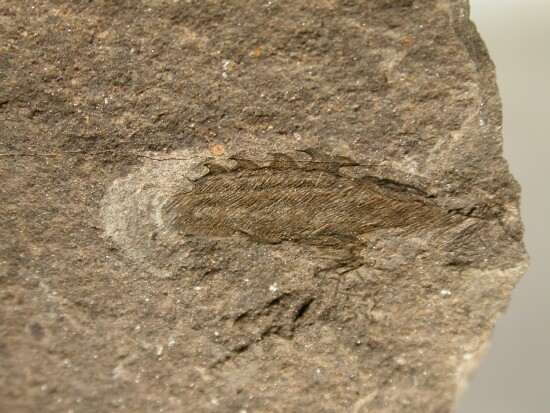来自中国科学院古脊椎动物与古人类研究所,英国布里斯托大学等处的研究人员通过对一类已灭绝的无颌脊椎动物的头部进行同步辐射X-射线断层扫描研究,发现了脊椎动物颌骨的秘密,为解析大脑和感觉器官重组进化提供了重要线索。这是第一次提出了有颌脊椎动物进化起源步骤的实体证据,这一研究成果公布在8月18日公布的Nature杂志上。
文章的通讯作者是中科院古脊椎动物与古人类研究所朱敏研究员,以及布里斯托大学的Philip C. J. Donoghue,其中朱敏研究员早年毕业于南京大学,主要从事早期脊椎动物的起源、演化及相关生物地层学研究。在不断发现新化石的基础上,对古生代鱼类各大主要门类都作了深入研究。近年来,他领导的课题组致力于对硬骨鱼类起源、早期演化以及四足动物起源的研究,并取得了多项进展,在英国Nature杂志上发表了5篇论文。文章第一作者是中科院古脊椎动物与古人类研究所盖志琨。

几乎所有现存脊椎动物都有颌骨,少数没有的(七鳃鳗和八目鳗)在其他方面非常专门化,以至于要了解颌骨是怎样形成的都有困难。
在这篇文章中,研究人员以化石盔甲鱼类(galeaspid)作为研究对象,深入分析了这种已灭绝的无颌脊椎动物的,4亿年前的脑部化石,从中发现了一个有趣的中间形态:现代无颌鱼类以及大部分化石无颌鱼类都有一个位于中间的鼻孔,但盔甲鱼类有成对的鼻囊,就像有颌脊椎动物那样,这样便将“脸部”中间的位置腾了出来,从而使这里能够长出颌骨来。
盔甲鱼类是无颌类的一个重要支系,头甲一块,具腹甲,无发电区,感觉沟发育,胸角一对或两对。化石很丰富,地区性色彩极浓,产于中国南方地区、塔里木盆地西北缘、宁夏和越南北部的志留系与泥盆系,具有重要的生物地层和古动物地理意义。
这项研究采用了瑞士同步辐射光源SLS(Swiss Light Source)进行深入的X射线分析,这一光源属于第三代同步辐射光源,位于瑞士保罗谢尔研究所PSI(Paul Scherrer Institute)。SLS的设计优先考虑的是初级电子束和次级光子束的高亮度、宽波段和稳定的温度条件。SLS的主要组成部分是能量为2.4电子伏特的电子储存环(周长288米)。它提供了高亮度光子束用于材料科学、生物学和化学研究。
SLS的建造是瑞士科学政策的一个里程碑,也是PSI多学科研究发展和研究设施互补的标志。在这篇文章中,研究人员就利用这一光源揭示了动物大脑和感觉器官的形状。
生物探索推荐英文论文摘要:
Fossil jawless fish from China foreshadows early jawed vertebrate anatomy
Most living vertebrates are jawed vertebrates (gnathostomes), and the living jawless vertebrates (cyclostomes), hagfishes and lampreys, provide scarce information about the profound reorganization of the vertebrate *** during the evolutionary origin of jaws. The extinct bony jawless vertebrates, or ‘ostracoderms’, are regarded as precursors of jawed vertebrates and provide insight into this formative episode in vertebrate evolution. Here, using synchrotron radiation X-ray tomography we describe the cranial anatomy of galeaspids, a 435–370-million-year-old ‘ostracoderm’ group from China and Vietnam17. The paired nasal sacs of galeaspids are located anterolaterally in the braincase, and the hypophyseal duct opens anteriorly towards the oral cavity. These three structures (the paired nasal sacs and the hypophyseal duct) were thus already independent of each other, like in gnathostomes and unlike in cyclostomes and osteostracans (another ‘ostracoderm’ group), and therefore have the condition that current developmental models regard as prerequisites for the development of jaws. This indicates that the reorganization of vertebrate cranial anatomy was not driven deterministically by the evolutionary origin of jaws but occurred stepwise, ultimately allowing the rostral growth of ectomesenchyme that now characterizes gnathostome head development.







